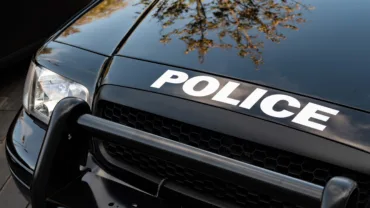In today’s digital world, law enforcement investigations can benefit from paying attention to social media channels, and all the posts, photos, and videos that users publish to these social networks. For law enforcement, understanding the role of social media forensics and how to use it effectively in criminal investigations can be critical to the success of your cases.
What is social media forensics?
Social media forensics involves the collection, analysis, and storage of information, photos, videos, and other electronic evidence that are publicly available from social media sources for purposes of locating criminals. These don’t include the deeper information that might require a subpoena to obtain, but material that is already publicly available can be a treasure trove of useful evidence in an investigation.
The growth of social media and social media forensics
A recent report from the Congressional Research Service estimates that 70% of adults used some form of social media in 2021, compared to only 5% in 2005. This vast increase in popularity means that more and more people are sharing their lives via social media, and with respect to criminals, potentially leaving or publicly publishing evidence through these social channels and platforms.
Naturally, law enforcement agencies have been increasing their focus on social media as well, as indicated in the 2016 survey of law enforcement agencies by the Urban Institute and the International Association of Chiefs of Police. The survey showed that law enforcement agencies use social media for a wide variety of purposes, including notifying the public of safety concerns, community outreach, and public relations, in addition to conducting investigations.
Social media forensics in action
The incidents of law enforcement leveraging social media to aid in their investigations are numerous, for example:
- In 2015, a young woman was found dead on the side of the road in Saskatoon, Canada, with a belt near her body. Three years later, Saskatoon police convicted a woman of manslaughter based on a photo posted on social media of her and the victim taken earlier on the night of the victim’s death. How? The police were able to show that the belt the suspect was wearing in the photograph was the same one left at the scene of the crime. Police may never have been able to make the connection without the photo evidence they found on social media.
- More recently, police in Detroit used social media posts of a suspect dancing to find and arrest him for four armed robberies. The key pieces of evidence in the dance videos were his shoes, which the police say are similar to the ones worn by the robber.
- In Tuscaloosa County, Alabama, a man was arrested and jailed after law enforcement learned that he was using social media apps to solicit minors.
A similar theme in all these cases, and many more like them, is that social media forensics provided key evidence from social media accounts to tie the suspects to the illegal actions.
When is the right time to begin a social media investigation?
For law enforcement investigators who want to integrate social media forensics into their investigations, there is no better time than to start as soon as possible. By promptly beginning your social media investigation into publicly available sources and accounts, it will help ensure that potentially relevant evidence is not lost, destroyed, or corrupted (intentionally or unintentionally) — or that the associated social media accounts are closed prior to completing your investigation.
In addition, social media forensics can also play a critical role in older cases, such as assisting police with unidentified and missing person cases. In June 1995, for example, a young man left his house to follow a Grateful Dead tour, and he never returned. The young man was a passenger in a vehicle that was in a terrible crash in Virginia, killing the driver and the young man. The driver’s family could not inform the young man’s family of his death because they simply did not know who the young man was. An updated police composite sketch based on the autopsy photos ended up on a social media platform in 2012, and the young man’s brother and mother saw the posting and recognized him, providing law enforcement with the identification needed to close a 17-year-old case.
Conducting social media forensics properly
The key point that law enforcement must remember is to comply with many of the same laws governing collection of evidence when conducting investigations on social media. Depending on jurisdiction, law enforcement may need a warrant to obtain information from a social media platform regarding an account holder, especially if that information has not been made publicly available by that person.
In addition, each social media platform may have different rules or policies that could impact law enforcement’s ability to obtain such information.
Digital tools forensic social media investigators use
Social media investigators have a variety of tools and strategies for collecting and analyzing social media information, such as:
- Manually visiting social media account pages
- Printing or taking screenshots
- Downloading copies of photos or files
- Accessing open source or other software programs to collect and preserve information
- Subpoenaing or obtaining a court order for production of additional information and documents.
The importance of social media forensic tools is critical as people share more of their lives online — even their illicit activities. As law enforcement agencies continue to rely on more sophisticated tools to gather and analyze evidence more efficiently, their investigations will benefit from an active search of social media networks as a critical first step.
Learn how Thomson Reuters Risk and Fraud Solutions for law enforcement can help your investigative team with its social media investigations.








